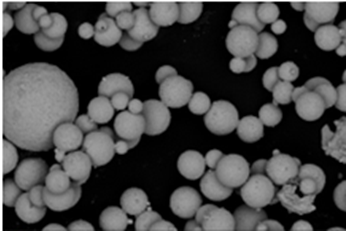During powder processing, a fraction of the production will inevitably be powder particles that are smaller than the desired size range. Typically, these particles are remelted, and the recycled material is processed into powder again. The series of extra steps (i.e., pressing, remelting) that are subsequent to the original powder making process, requires additional time and significant energy costs, especially the remelting of the material.
LLNL researchers have developed an alternate method to increase powder size without “starting over” by melting the powder particles again. The less costly solution involves sintering, a process in which powders are heat treated at an elevated temperature that is below their melting point. During sintering, solid diffusion is promoted in the material, and subsequently, adjacent particles fuse together where they contact each another, rendering particles of greater size than before sintering.
LLNL has developed a process to partially sinter starting material composed of smaller-sized powder particles to obtain a loose powder product that have larger-sized particles. To avoid the undesired formation of a single fully-sintered piece, the starting powder material is heated for a relatively shorter time. The time and temperature required for partial sintering is dependent on the powder material properties, powder size, temperature, and desired size distribution. If the particle size of the partially sintered powder is larger than the desired size range, it could be subsequently milled or otherwise ground to obtain the desired particle size.
- Value Proposition: Reduced powder waste leads to lowering of manufacturing and operating costs.
- Ability to produce powder not just of desired size, but of other properties uniquely required for a specific application, e.g., can also be a method to produce powder with unique porous properties.
- Powder recycling and reprocessing
- Production of special powders of desired size and properties
Current stage of technology development: TRL 3
LLNL has filed for patent protection on this invention.


